NYC’s Forgotten ‘War on Christmas Trees’
Discover how an obscure holiday crackdown affects festive street vendors today!


Woodside is a rather bustling neighborhood in northwestern Queens, bordered on the west by Sunnyside and on the east by Elmhurst and Jackson Heights. Roosevelt Avenue cuts through the main portion of Woodside, though there are plenty of quieter spots in the neighborhood just a stone’s throw away. By the 1930s, about four in five people in Woodside were Irish, and though the area has become significantly more diverse, with new Asian and Hispanic communities forming, the area still maintains some long-standing Irish businesses and historic architecture. The neighborhood includes a “Little Manila” along Roosevelt Avenue, a handful of green spaces, and some rather odd structures that have been landmarked and preserved over the years. Here is our guide to the top 12 secrets of Woodside.
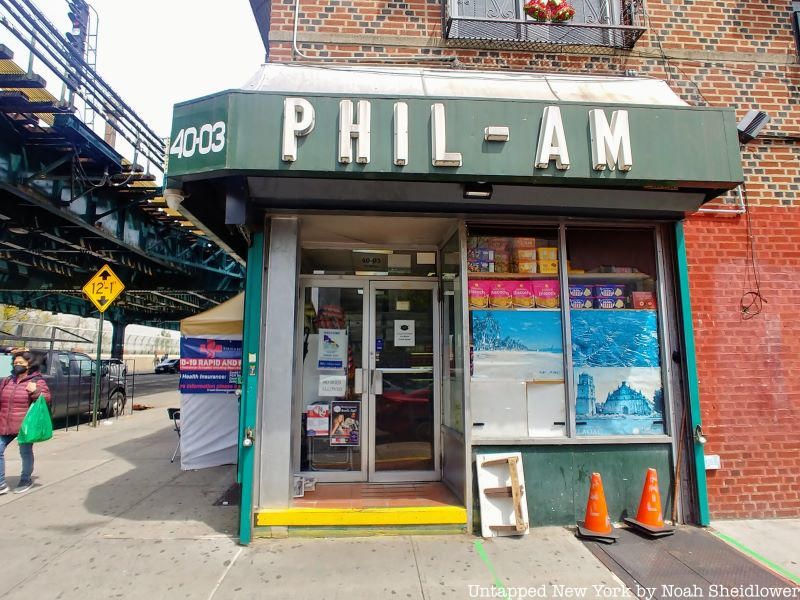
Woodside has one of the highest Filipino populations in New York City, thus giving part of the neighborhood the nickname “Little Manila.” A strip of Roosevelt Avenue between 61st and 70th Street, mostly concentrated in the high 60s, is commonly considered the heart of the Filipino community, which dates back to around the 1970s. After the passage of the 1965 Immigration and Nationality Act, Filipino medical professionals moved to Woodside, many working at the nearby Elmhurst Hospital, and most Filipinos felt welcome since Woodside had been predominantly Irish Catholic at the time.
Today, there are about 50,000 to 70,000 Filipinos living in the Woodside area. One of the most popular stores in the neighborhood is Phil-Am Food Mart, featuring everything from ube desserts to Filipino meats to dishes like lumpia (spring rolls) and balut (fertilized duck egg). Right across the street is Ihawan, known for its barbecue and large platters called kamayan. Jollibee, a popular Filipino fast-food chain, has a location on Roosevelt Avenue. Other notable spots include Tito Rad’s, Krystal’s Cafe, Red Ribbon Bakeshop, and Renee’s Kitchenette and Grill.
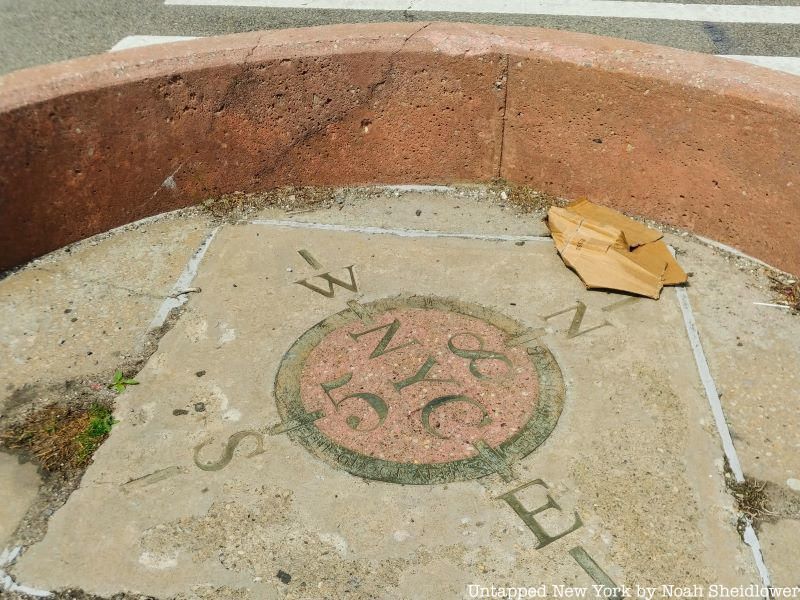
A traffic median along Queens Boulevard in Woodside at 58th Street claims to be the center of New York City, and most passersby likely have never noticed it. But the sign is inaccurate, and not by a small measurement. The true center of New York City is really in Bushwick, in a completely different borough miles away, though the Bushwick center does not have a marker.
Nobody knows exactly why this marker exists in Woodside, and there is no evidence that the city government approved of its installation. It’s likely that someone not affiliated with the government placed the marker there with little knowledge of city geography. The city has no plans to remove this marker or erect one in the actual center of New York City.
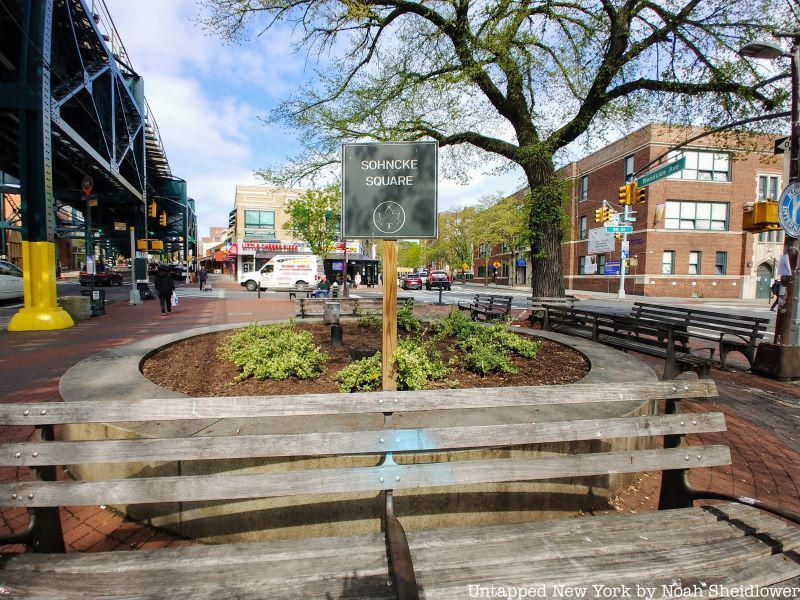
Every year, a parade called St. Pat’s for All starts at Skillman Avenue and 43rd Street and ends at 58th Street and Woodside Avenue. The parade was created in response to the banning of LGBTQ+ people from the Manhattan St. Patrick’s Day Parade and was first held in 2000. According to their website, St. Pat’s for All is the first in over 260 years of Irish parades in New York City to be open to all who wish to celebrate, drawing on themes from the 1916 Easter Proclamation of the Irish Republic.
The parade was created by Brendan Fay, a community activist and filmmaker who was born and raised in Ireland before moving to Astoria. He produced the “Silence to Speech” documentary series about being Irish and LGBTQ in America. The parade is supported by organizations including the New York Irish Center and the Irish Arts Center. Former Mayor Bill de Blasio, former Council Speaker Corey Johnson, Senator Charles Schumer, and Congresswomen Alexandria Ocasio-Cortez and Carolyn Maloney spoke at the 2020 iteration of the parade.
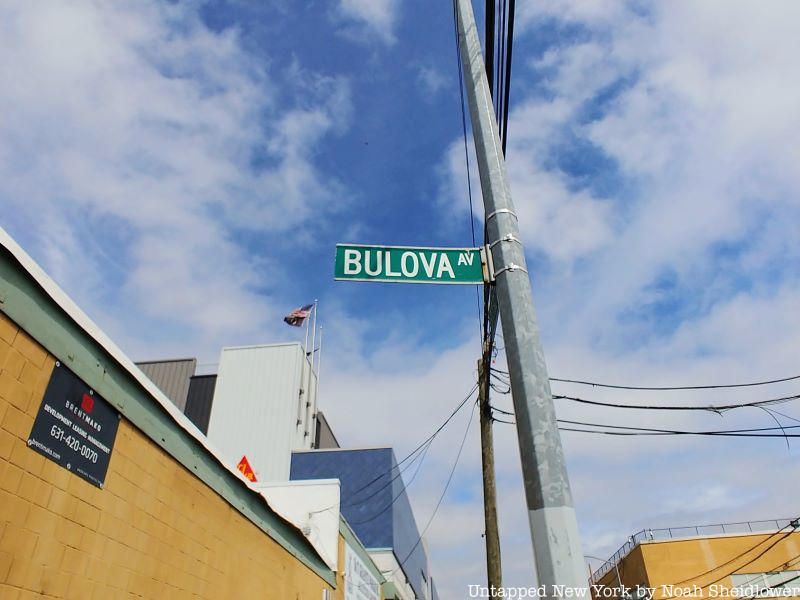
Bulova is a watch and clockmaker that was founded in Queens in 1875 as the J. Bulova Company. Bohemian immigrant Joseph Bulova founded the company nearly 40 years before opening his first plant dedicated to producing watches, Bulova received national attention in 1923, around when it opened operations in Woodside and Flushing. In fact, once Charles Lindbergh became the first solo pilot to cross the Atlantic nonstop, he received $1,000 and a Bulova watch. The company produced the world’s first television advertisement in 1941, and it has since produced watches such as Accutron, Computron, and an Apollo 15 watch.
Today, there are numerous locations named for or dedicated to Bulova in Woodside. The Bulova Corporate Center was first designed to house offices and production facilities of the company. The Art Deco building was built in 1953 and today features a modern interior. A small street in northern Woodside near Grand Central Parkway is named Bulova Avenue. On 62nd Street is the building which hosted the Joseph Bulova School of Watchmaking, which was a tuition-free school built in 1948.
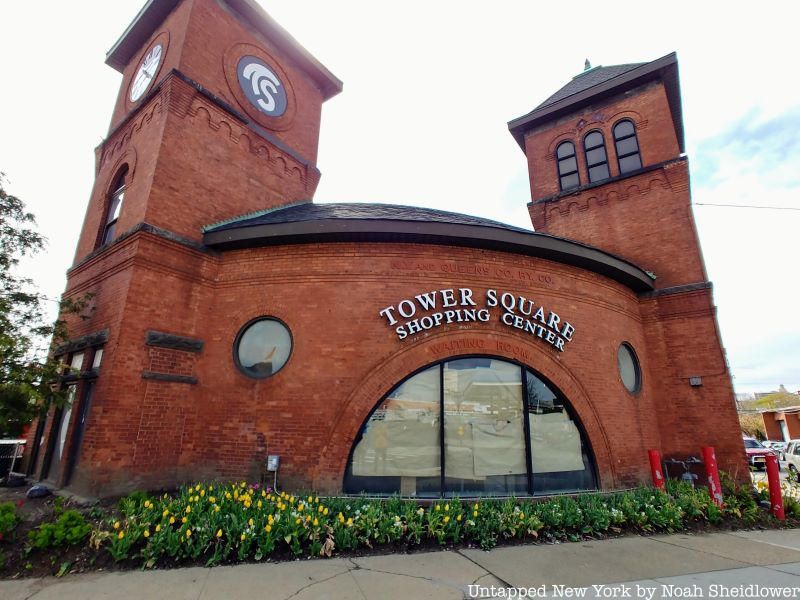
The Tower Square Shopping Center features a Michael’s, Starbucks, and a perhaps out-of-place structure: a trolley barn. The trolley barn, which is now empty but used to host a Pizza Hut, was built in 1896 for the New York and Queens Railroad Company. The building served trolley cars from Flushing, College Point, Jamaica, and Long Island City, and was the site of the largest carbarn in Queens. Inscriptions on the facade still read “NY AND QUEENS CO., RYI CO” and “WAITING ROOM.”
The formation of the Independent Subway System and the expansion of buses led trolley companies to go bankrupt, and the building serviced the last trolley in around 1937. In the 1980s, plans to tear down the building came to a dramatic halt when a stop-work order was issued minutes after a bulldozer began working on the clocktower in 1987. Community preservationists rallied to save the building then and still work to protect its architectural integrity.
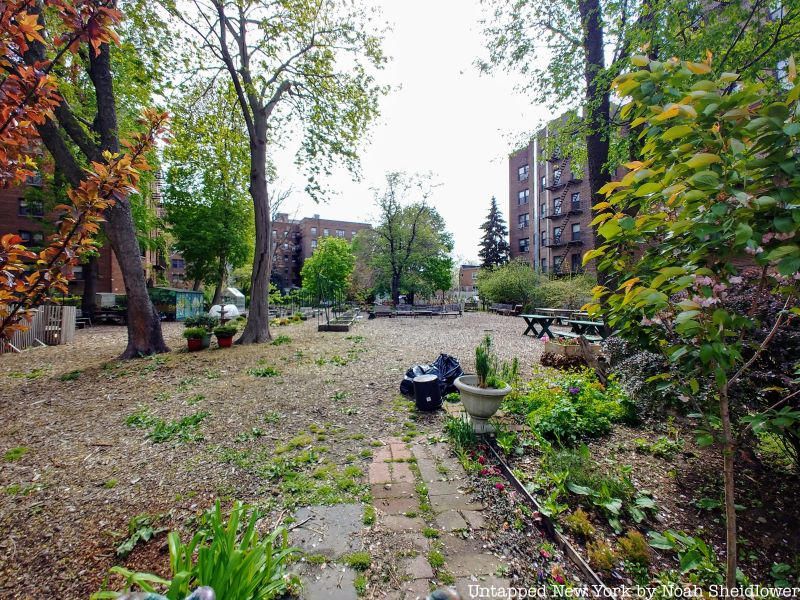
Moore-Jackson Cemetery is a historic cemetery in Woodside that was active from 1733 until around 1868. The cemetery is one of the last in New York dating to the 18th century, and about 50 corpses are interred there. In 1684, Samuel and Charity Moore bought the plot of land on which the cemetery stands and owned it for over a century. Many of those interred are family members of the Moores’ 10 children, including Augustine Moore, who died in 1769 and still maintains an inscription. Though, most of the tombstones are completely illegible today. John C. Jackson bought additional land near the cemetery in 1867.
Members of the Moore and Jackson families took care of the site until 1910, when it fell into disrepair. The Works Progress Administration razed the land in the 1930s, and in 1954, the city government seized the cemetery, which was maintained starting in 1974 after two decades of deterioration. The Queens Historical Society restored it around the turn of the century, and a community garden was established in 2018.
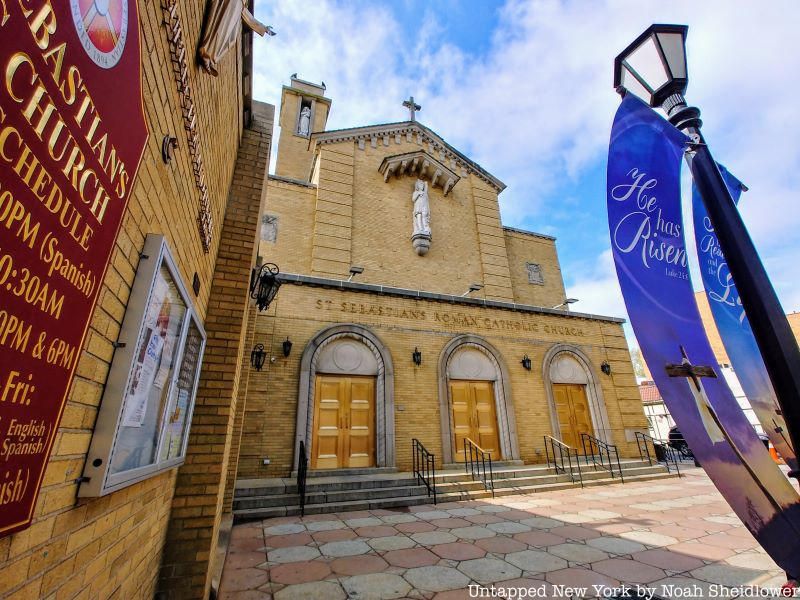
St. Sebastian Roman Catholic Church was founded in 1896, and when it came time for the congregation to move buildings, they chose an unexpected one: the former location of Loew’s Woodside Theatre, which opened in 1926. The 2,000-seat theater was designed by Herbert J. Krapp, who designed about half of the current Broadway theaters including the Lyceum, Booth, and New Amsterdam. On opening night, the theater screened a pre-release of Buster Keaton’s Battling Butler.
The entrance and lobby of the theater were demolished and replaced with a Romanesque bell tower. However, the theater’s auditorium decor was kept intact, including the domed ceiling and 40 columns along the side walls. Today, the church draws in a diverse range of congregants, including Hispanic, Irish, Filipino, and Korean Catholics.
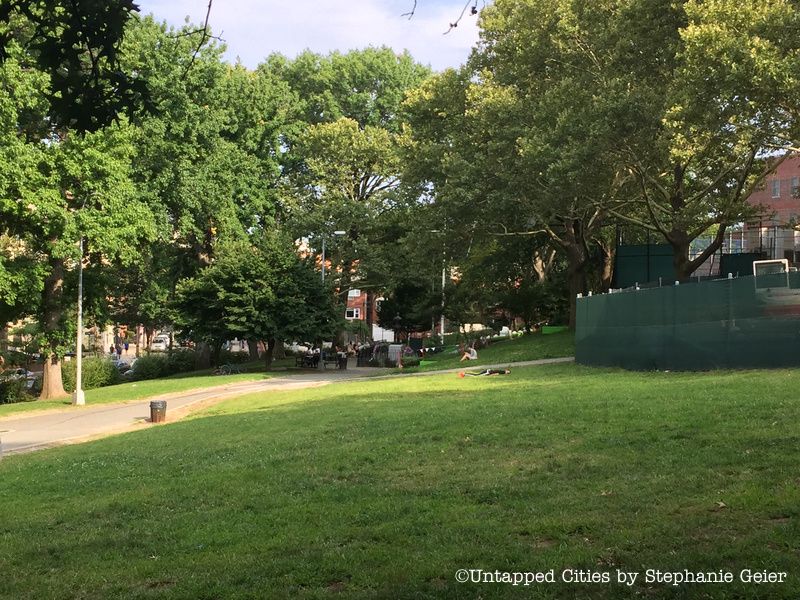
Early accounts of what would become Woodside included descriptions of a majestic chestnut tree, which was centuries-old by the time it came down in the late 1800s. It stood around 10 feet high near a junction of three dirt roads, making it a central meeting place for the community. The tree also played a role in the Revolutionary War as a place for disseminating vital information. People would post legal notices and other public announcements to the tree’s base.
A community developed around the tree thanks to Benjamin W. Hitchcock, a publisher of sheet music and periodicals who organized excursions from the city to draw people in. Nearly 1,000 plots of land were laid out, and Hitchcock priced empty lots at $300, taking a 25% commission on each sale. It is likely that he named the area Woodside, which popped up in the mid-1800s. He undertook real estate promotions, though many plots remained empty since they were rather expensive compared to tenement apartments in Lower Manhattan.
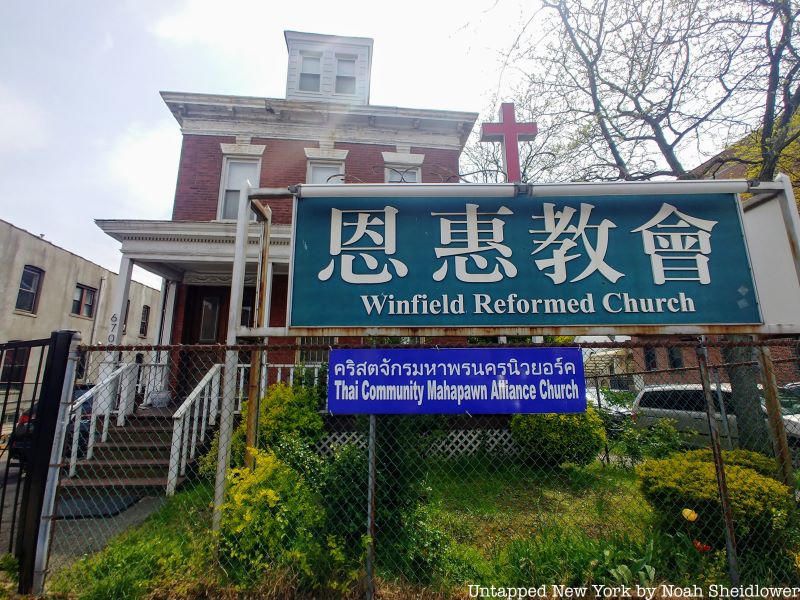
Winfield Reformed Church is a Protestant church founded in 1880, making it the oldest Taiwanese church established in North America. The church was originally located on Queens Boulevard and moved to its current location in 1910, with the current building constructed in 1914. The church is named after an adjacent area that was largely incorporated into Woodside.
The church was historically Dutch-speaking, though a large wave of Taiwanese immigrants came in the 1960s, becoming predominantly Taiwanese by 1969. Church pastors have for decades advocated for Taiwanese causes, attending rallies and speaking with the media.
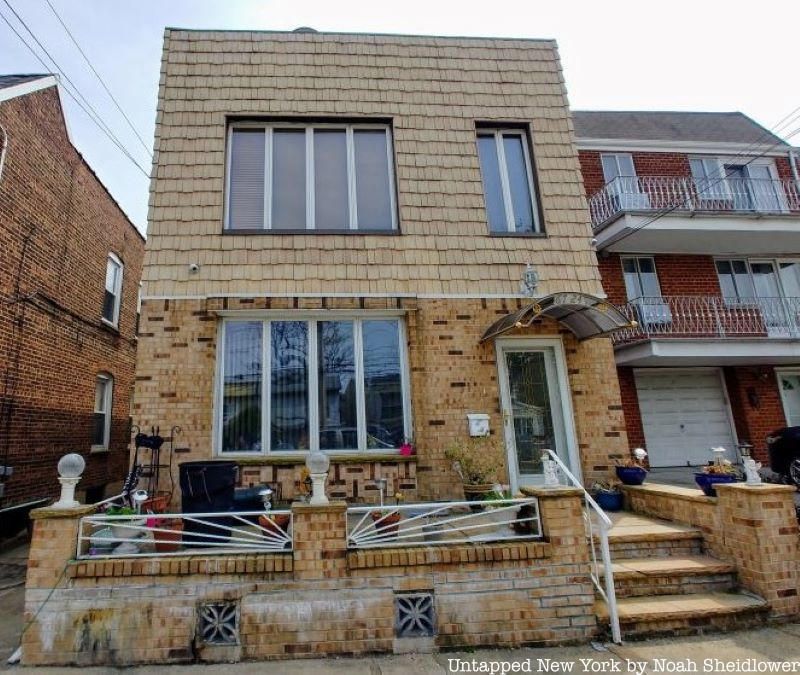
Francis Ford Coppola, who would go on to direct legendarily films such as The Godfather and Apocalypse Now, had his beginnings at 67-24 49th Avenue in Woodside. Born in Detroit, Coppola moved with his family to the Woodside home in 1941 at age two, living there for a decade before moving to Lake Success in Nassau County. The family moved to New York due to his father’s promotion to principal flautist of the NBC Symphony Orchestra.
Coppola was constrained to the home for much of his childhood after developing polio. He would watch puppet shows at home, which inspired his interest in theater, then movies. Other famous Woodside residents in the film world have included actor Edward Burns, the voice of Popeye the Sailor Jack Mercer, and actor Joe Spinell.
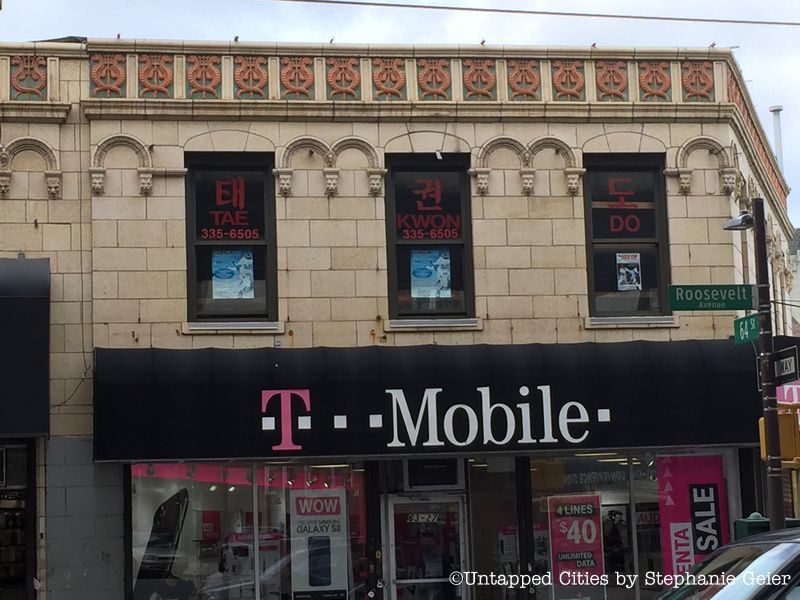
Child’s Restaurants, among the first national dining chains in the country, once had over 125 locations in the 1920s and ’30s. Two former restaurants are found in Woodside, with others scattered around the city. The first former Child’s Building at 59-37 Queens Boulevard at 60th Street was built in 1931, according to Forgotten New York. The building’s lower level houses several everyday businesses, but it has a terra cotta decor signature of Child’s Restaurants, including sea horses, urns, and a coat of arms.
Woodside’s second former Child’s Restaurant is at 63-09 Roosevelt Avenue, containing markets and other businesses. It was built in 1925 at the corner of one of Woodside’s busiest streets, featuring nautical decor. There were a handful of Child’s Restaurants in nearby Sunnyside and College Point as well.
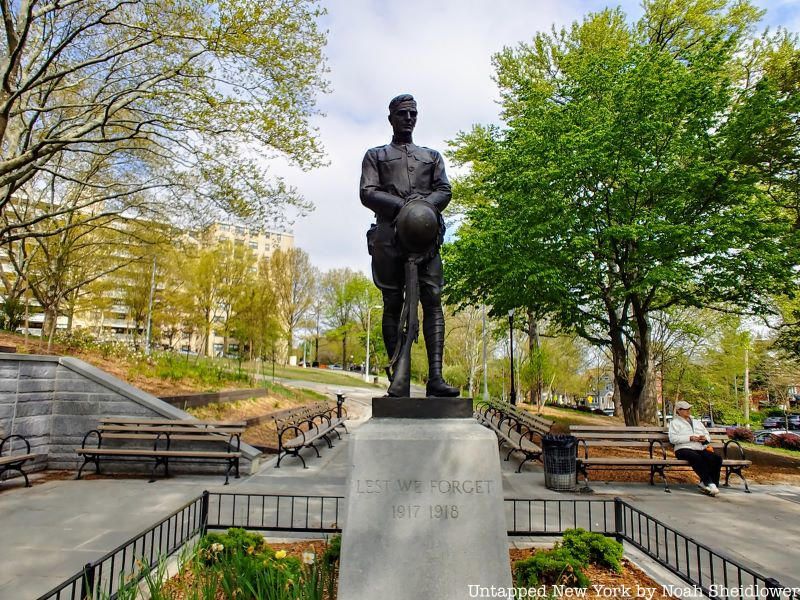
Doughboy Park, bounded by Woodside Avenue, 52nd Street, and 39th Road, is a hidden gem in Woodside, notable for its statue of a doughboy and a small garden. After the land on which the park is situated was determined to be too steep and overgrown for children to play on, it was assigned to NYC Parks in 1957, which later developed it into a sitting space. The doughboy monument was placed in the park in 1923 to honor members of the U.S. Army or Marine Corps used by the British during World War I. The sculpture was created by Burt W. Johnson from Flushing depicting a solemn World War I soldier holding his helmet and gun standing atop a granite pedestal inscribed with “LEST WE FORGET 1917-1918.” Soldiers from Woodside would gather at the “mustering ground” before leaving to fight, though 10 soldiers who left from the park never returned,
In 1990, the statue was renewed and coated with wax, and the surrounding plaza was renovated in 2001 to include benches. A stone panel was installed with the names of 11 major World War One campaigns and seven key battles in which American soldiers fought. Locals continue visiting the park every Memorial Day, as they have done for over a century.
Next, check out 16 Must-Visit Places in Woodside!
Subscribe to our newsletter